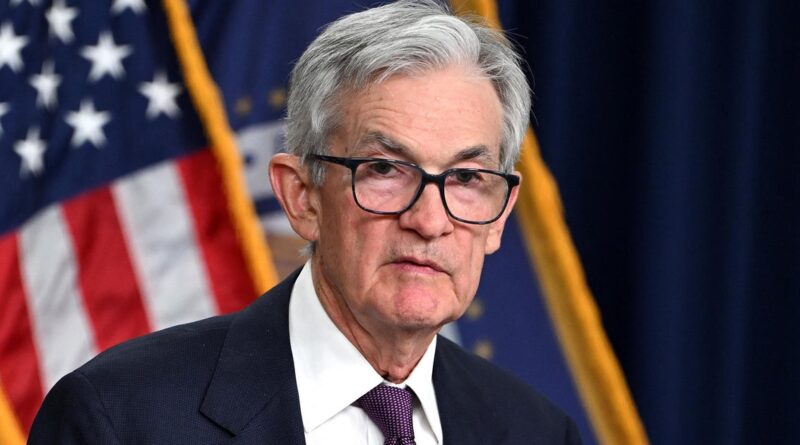Federal Reserve meets Wednesday for interest rate decision. Here’s what economists predict.
The Federal Reserve is set to make its next interest rate decision on Wednesday, even as a near-total blackout of federal economic data continues amid the government shutdown.
The Labor Department, however, on Friday released one key report ahead of its meeting: the Consumer Price Index. That report showed that the inflation rate rose at a pace of 3% last month, cooler than expected, as the impact of President Trump’s wide-ranging tariffs have so far been more muted than economists have forecast.
Economists say the softer inflation report likely opens the door to a rate cut on Wednesday.
“Concerns about tariffs driving prices higher are still not showing up in most categories,” Scott Helfstein, Global X’s head of investment strategy, said Friday in an email. “Nothing in the inflation print should stop the Fed from cutting rates next week. Yes, prices are higher, but not enough to keep them from helping the economy,” he added.
There’s a 96.7% probability that the Fed will cut its benchmark rate by 0.25 percentage points on Wednesday, according to CME FedWatch, which bases its predictions on 30-Day Fed Funds futures prices.
A quarter-point cut would bring down the benchmark rate to a range of between 3.75% to 4%, down from its current range of between 4% to 4.25%, and mark the Fed’s second rate cut this year.
What’s the argument for cutting rates?
The Federal Reserve has a so-called dual mandate to keep both inflation and unemployment low. When inflation is soaring — such as when it hit a 40-year high of 9.1% in June 2022 — the Fed ratchets rates higher to make borrowing more expensive, which in turn dissuades consumers and businesses from spending, tempering inflation.
But a weak labor market can be bolstered by lower interest rates, because it’s easier for businesses to expand and hire more workers if it’s less expensive to borrow money.
When Powell last month announced the Fed’s first rate cut of 2025, he signaled the central bank was growing increasingly concerned about a sharp slowdown in the labor market. “In this less dynamic and somewhat softer labor market, the downside risks to employment appear to have risen,” he said in September.
However, the monthly jobs report for September wasn’t released earlier this month due to the federal shutdown. In an Oct. 14 speech, Powell acknowledged the data halt, yet added that the central bank has access to “a wide variety of public- and private-sector data that have remained available.”
According to those sources of information, “the outlook for employment and inflation does not appear to have changed much since our September meeting,” Powell noted.
Friday’s CPI report “should keep the Fed focused on the labor market in terms of the near-term policy trajectory. In the absence of the September jobs report, an October cut appears to be a done deal,” Bank of America economists noted in a Friday research report.
How would a rate cut impact your money?
While a quarter-point rate cut is relatively small, it would come after September’s reduction — and economists are also expecting the Fed to usher in a third cut at its December meeting. Together, that means the benchmark rate by year-end could sit 0.75 percentage points lower than it was in January.
That would help reduce rates for credit cards and loans such as home equity lines of credit, or HELOCs. Those types of credit products are based on the prime rate, or the interest rate that banks charge each other, and which in turn is based on the Fed’s benchmark rate.
Mortgage rates, meanwhile, have already dipped ahead of the Fed’s rate decision. While mortgage rates aren’t set by the Fed, they’re heavily influenced by its policy moves, as well as bond market investors’ expectations for economic growth and inflation.
The average 30-year fixed-rate mortgage dropped to 6.19% as of Oct. 23, marking their lowest level in a year, according to Freddie Mac. Homebuyers might not see much more of a break, at least in the near-term, economists said.
“Mortgage rates have moved down notably in advance of the Fed’s meeting, hitting their lowest level in more than a year, but further declines will depend on new developments,” noted Realtor.com’s chief economist Danielle Hale in an email. “The Fed’s decisions are anticipated by the market, which means that the upcoming rate cut and several more over the next few months are already largely priced in.”





